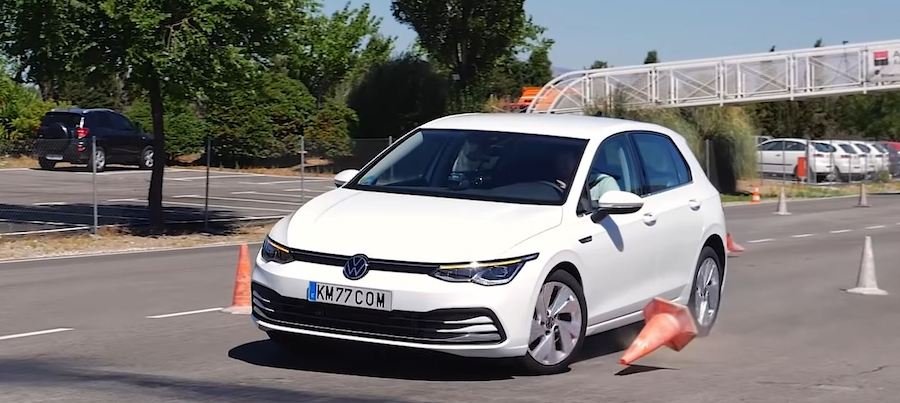Is the New 2020 Volkswagen Golf Unsafe? Moose Test Seems to Suggest So

But either way, we wouldn't crash into one in a Volkswagen Golf.
Car safety is primarily focused on passive protection, as in what happens when you crash. Scanner-based systems like auto emergency braking are also coming under scrutiny. But what about crash prevention? Can you avoid hitting an obstacle in the middle of the road while behind the wheel of something like a VW Golf?
Back in 2017, the answer to that question was a resounding 'yes', as the German hatchback was subjected to the moose test and performed it at 76 kph (47.2 mph). However, the new one got subjected to the same test by Km77 last month, and didn't perform as well.
The best it could do was 69 kph or 43 mph. The Spanish testers never call anything a 'fail,' but it's safe to assume the Golf isn't the best at avoiding obstacles. The result is in line with some of the cheapest cars available in Europe, like a Dacia Sandero.
The test version of the 2020 Golf is the First Edition model with the 1.5 eTSI (mild-hybrid turbo) engine and a 7-speed DSG gearbox. It's running on 17-inch wheels and some Bridgestone Turanza 225/45 R17 tires.
So what happens? Well, as you can see in the video, the Golf understeers and the driver can't avoid hitting the cones or is unable to swerve back into his lane in time. Now, it would be very sarcastic to make jokes about Volkswagen FWD cars and understeer, and we're not going to do that. Instead, we'd place the blame on the electronics.
Most of the time in these tests, cars seem to detect they're in an accident avoidance scenario and they simply start to slow down. But the Golf doesn't seem to do that. It could be down to this being a brand new model.
